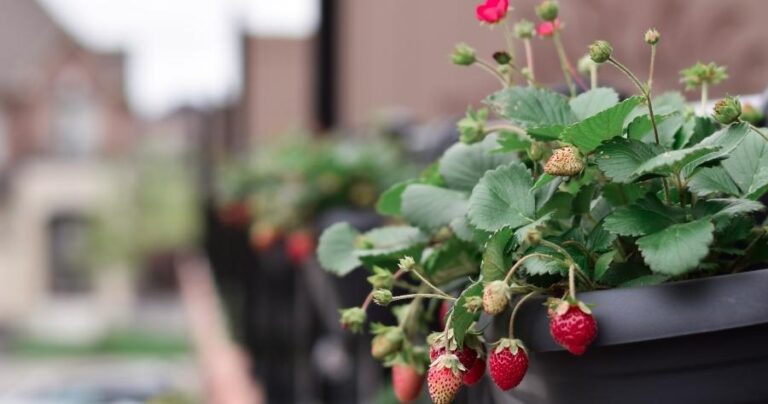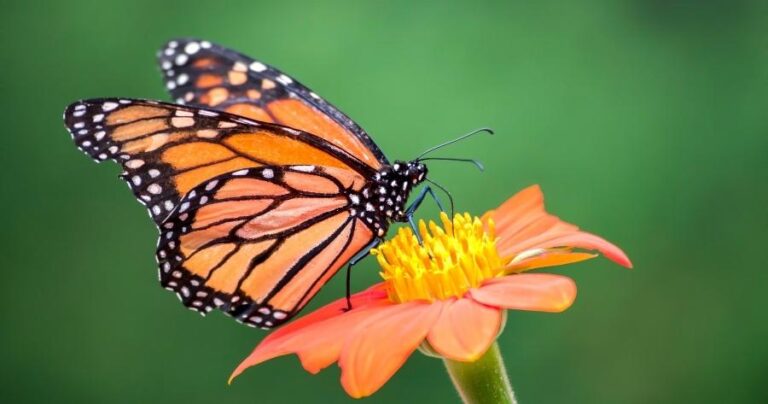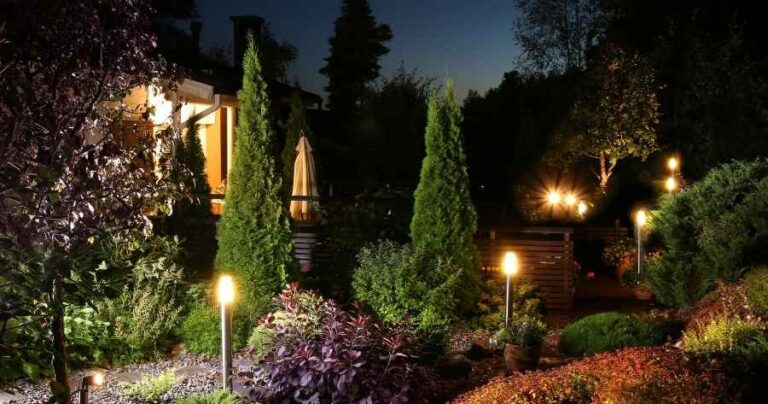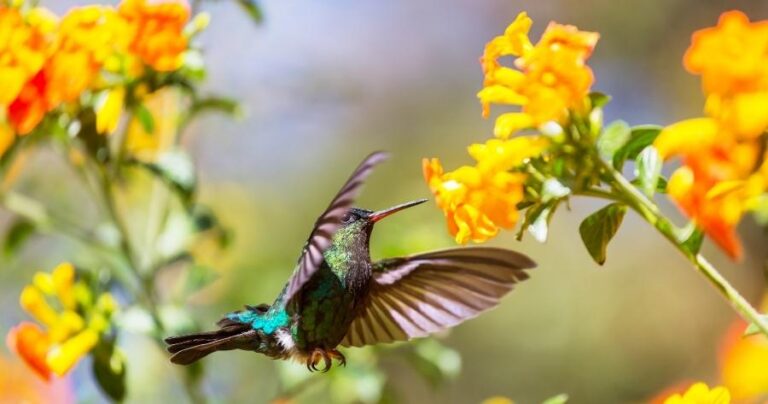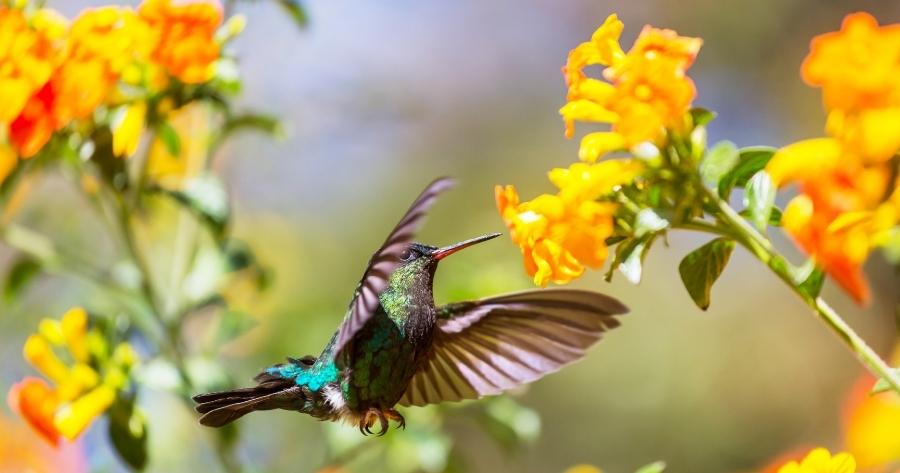
How To Attract Birds To Your Garden Naturally
There’s something deeply peaceful about waking up to the gentle sound of chirping birds outside your window. There’s nothing quite like the early morning melody of birdsong; the soft whistles of robins, the lively chatter of finches, or the flutter of wings as they dart from tree to tree. For many gardeners, these sights and sounds bring peace, joy, and a sense of connection to the natural world. It’s one of those simple, grounding pleasures that makes a garden feel truly alive.
Beyond the beauty of their songs and the joy they bring, birds play a crucial role in maintaining a healthy and thriving garden ecosystem. They are essential partners in keeping your garden healthy. Birds play multiple roles that go unnoticed; pollinating flowers, dispersing seeds, and eating insects that could otherwise damage your plants. Every chirp, every flight, and every peck contributes to the natural cycle that sustains your green space. In fact, a single pair of chickadees can eat thousands of caterpillars in one summer, while hummingbirds help pollinate countless blooms.
Attracting birds to your garden naturally doesn’t just make your outdoor space livelier; it creates balance in nature. Unlike artificial pest control or chemical fertilizers, welcoming birds builds an eco-friendly environment that supports biodiversity. Whether you live in a rural setting with plenty of open space or a small urban yard, you can turn your garden into a bird-friendly paradise with the right setup. Enticing birds is therefore one of the most natural and effective ways to create a balanced, self-sustaining garden ecosystem. Their presence supports not only plant life but also the broader web of insects and microorganisms that thrive in a healthy environment. When birds are around, your garden’s soil becomes richer, pests become fewer, and the entire ecosystem becomes more resilient.
Inviting birds doesn’t mean buying expensive feeders or artificial lures. Instead, it’s about recreating the natural conditions birds love; native plants, fresh water, safe shelter, and a chemical-free environment. Birds are drawn to authenticity; they prefer gardens that mimic their natural habitats over overly manicured spaces. Even small changes, like letting wildflowers grow or adding a shallow water dish, can make a huge difference.
Whether you have a large rural garden, a small suburban yard, or even a city balcony, you can transform your space into a thriving bird sanctuary. You don’t need acres of land or a big budget, just the right approach, patience, and a willingness to let nature take the lead.
In this comprehensive guide, you’ll learn how to attract birds naturally and keep them coming back year after year. We’ll cover the best plants, the right food sources, nesting tips, and how to maintain your garden in harmony with nature; all without disrupting the ecosystem.
Let’s take a closer look at how you can bring color, music, and life into your garden by making it a true home for birds. By following these steps, you’ll not only enjoy a more vibrant outdoor space but also contribute to the conservation of local wildlife, turning your garden into a living, breathing haven of nature.
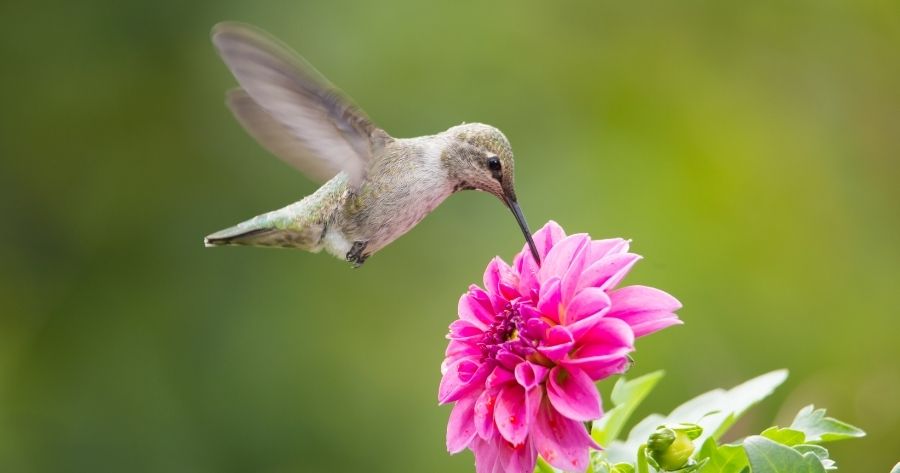
Natural Ways Of Attracting Birds To Your Garden
Before you start making changes to your garden, it’s important to understand why birds visit in the first place. Birds are drawn to places that meet three essential needs: food, water, and shelter.
- Food: Birds search for reliable food sources such as seeds, berries, insects, and nectar.
- Water: A consistent supply of clean water for drinking and bathing is vital.
- Shelter: Trees, shrubs, and nesting boxes offer safety from predators and harsh weather.
When your garden provides these three essentials, it becomes an irresistible stop for a variety of species, from colorful finches and robins to hummingbirds and sparrows. Understanding this natural behavior is the first step toward creating a sustainable habitat that keeps them coming back year after year.
Choose the Right Plants for a Bird-Friendly Garden
Plants are the foundation of every bird-friendly garden. They offer food, shelter, and nesting materials. By growing the right mix of native plants, you can create an environment that feels natural and welcoming to local species.
a. Grow Native Plants
Native plants are perfectly adapted to your region’s climate and soil, which makes them easier to grow and maintain. More importantly, they attract native insects, an essential food source for birds.
Examples of bird-attracting native plants include:
- Sunflowers (Helianthus annuus) – Seeds for finches and sparrows.
- Elderberry (Sambucus nigra) – Berries for thrushes and robins.
- Coneflowers (Echinacea spp.) – Nectar and seeds for goldfinches.
- Serviceberry (Amelanchier spp.) – Fruits for bluebirds and orioles.
- Coral honeysuckle (Lonicera sempervirens) – Nectar for hummingbirds.
b. Include a Variety of Plant Types
Diversity is key. Combine:
- Trees for nesting and protection.
- Shrubs for shelter and berries.
- Flowering plants for nectar and seeds.
- Grasses for insects and ground-nesting birds.
A layered landscape mimics natural habitats, making birds feel secure and at home.
Provide a Steady Food Supply Year-Round
To attract birds consistently, your garden should provide food through all seasons. Birds have different needs depending on the time of year, so a variety of food sources ensures they never go hungry.
a. Spring and Summer: Insects and Nectar
During breeding season, birds feed on protein-rich insects. Encourage this by avoiding pesticides and planting flowers that attract pollinators. Hummingbirds, in particular, love nectar-producing plants like salvia, bee balm, and trumpet vine.
b. Autumn: Seeds and Fruits
As the weather cools, birds rely on seeds and berries to build energy reserves. Plants like sunflowers, millet, and berry shrubs (holly, dogwood, viburnum) are perfect for this period.
c. Winter: Fat-Rich Foods
When natural sources are scarce, offer high-energy foods. Hang seed feeders with sunflower seeds, suet, and peanuts. Evergreens like juniper and pine also provide winter berries and shelter.
By ensuring year-round food, your garden becomes a permanent refuge, not just a seasonal stopover.
Avoid Chemicals and Pesticides
Chemicals are one of the biggest threats to garden birds. While they may offer a quick fix for weeds and pests, the long-term effects are devastating to both your garden ecosystem and the wildlife it supports. Pesticides may kill pests, but they also destroy the very insects birds rely on for food and often poison the birds themselves.
When you spray chemicals on your plants, the toxic residues don’t just vanish. They cling to leaves, flowers, soil, and water. Birds feeding on contaminated insects or drinking tainted water slowly accumulate these toxins in their bodies. Over time, this weakens their immune systems, interferes with reproduction, and can even lead to death. Insecticides like neonicotinoids are especially harmful, they kill bees, butterflies, and small insects that form the foundation of the food chain. Once those insects disappear, the birds that depend on them soon follow.
a. The Hidden Dangers of Chemical Gardening
At first glance, a pesticide-sprayed garden might look healthy; lush leaves, minimal bite marks, and no visible pests. But underneath that picture-perfect surface, life is being erased. Every bug that dies from pesticide exposure is a meal lost to an insect-eating bird. Every herbicide that strips your lawn of dandelions also removes seeds that finches and sparrows depend on.
Even chemical fertilizers can be harmful. They may boost rapid plant growth, but they degrade the soil’s natural structure and kill off beneficial microorganisms. This, in turn, makes plants more dependent on synthetic products, creating an endless cycle of chemical reliance. For birds, this means fewer worms, fewer beetles, and ultimately fewer reasons to visit your garden.
b. Switch to Organic Gardening Methods
The good news is that there are safer, more natural ways to protect your plants and still maintain a beautiful, thriving garden. Organic gardening isn’t just a trend; it’s a return to nature’s original balance. When you adopt organic methods, you create a self-regulating environment where beneficial insects, microbes, and plants work together in harmony.
Here’s how you can start:
- Use compost instead of chemical fertilizers. Compost adds nutrients gradually and improves soil health naturally. It also attracts earthworms, which aerate the soil and become food for robins and thrushes.
- Encourage natural predators. Ladybugs, lacewings, spiders, frogs, and birds themselves are your best pest control allies. A healthy population of these creatures keeps aphids, mites, and caterpillars under control without a drop of poison.
- Use homemade organic sprays. Simple solutions like neem oil, garlic spray, or diluted soapy water can repel pests without harming other wildlife.
- Practice crop rotation and companion planting. Certain plants protect others naturally. For example, marigolds deter nematodes, basil keeps mosquitoes and flies away, and garlic repels aphids and snails.
When you embrace these natural practices, your garden becomes more resilient and self-sustaining, less dependent on outside chemicals and more attuned to the rhythms of nature.
c. Let Nature Manage Itself
A truly bird-friendly garden is one that accepts a bit of imperfection. A few nibbled leaves or a pest or two is not a sign of failure; it’s a sign of balance. Those caterpillars and beetles are vital food sources for baby birds. The web of life depends on small sacrifices that yield greater harmony.
You can even designate “wild zones” in your garden; small corners where you let weeds, wildflowers, and natural leaf litter remain untouched. These mini habitats become safe spaces for insects to thrive and for birds to forage. Over time, you’ll notice fewer outbreaks of harmful pests because your ecosystem will regulate itself.
d. Protect Your Soil and Water Sources
Healthy soil is the foundation of every living garden. Chemical use doesn’t just affect plants, it seeps into the soil, killing essential bacteria and fungi that support plant roots. Worse still, when it rains, those chemicals are washed into drains, rivers, and groundwater, harming aquatic life and polluting the environment.
By avoiding chemicals, you’re not just protecting birds in your garden, you’re helping safeguard entire ecosystems beyond your fence line. Switching to compost, mulch, and organic fertilizers helps retain soil moisture, prevent erosion, and nourish plant roots naturally. Over time, your soil becomes richer, darker, and teeming with beneficial organisms.
e. Benefits of Going Chemical-Free
Eliminating synthetic chemicals does more than protect wildlife, it transforms your garden into a living, breathing ecosystem. Birds return in greater numbers because they can find abundant, uncontaminated food sources. Pollinators thrive, and your plants become stronger and more resistant to diseases.
Your garden will start to feel more alive:
- You’ll see butterflies hovering over flowers.
- You’ll notice earthworms improving your soil.
- You’ll hear birds feeding their young on natural insects.
All these are signs of a healthy, balanced environment that sustains itself naturally.
f. Inspire Others by Example
When neighbors see your garden blooming without chemical help, they may be inspired to do the same. A few chemical-free gardens in a neighborhood can make a huge difference, creating connected sanctuaries for birds and pollinators across urban landscapes. Share your success stories, exchange seeds, and encourage eco-friendly habits within your community.
By saying no to chemicals and embracing natural methods, you’re not just nurturing your garden, you’re joining a global movement to restore balance to nature. Every patch of soil you keep toxin-free helps preserve life in its purest form.
Add Bird Feeders Strategically
Feeders are an excellent supplement to natural food sources, especially during harsh seasons. But placement, cleanliness, and type of food matter greatly.
a. Choose Feeders Based on Bird Types:
- Tube feeders: Finches, chickadees.
- Platform feeders: Doves, sparrows.
- Suet feeders: Woodpeckers, nuthatches.
- Nectar feeders: Hummingbirds.
b. Placement Tips:
- Keep feeders close to shelter (trees or shrubs) for safety.
- Avoid placing them too close to windows to prevent collisions.
- Clean feeders weekly to prevent mold and disease spread.
c. Offer Quality Food:
Use black-oil sunflower seeds, unsalted peanuts, nyjer seeds, and natural suet. Avoid dyed or flavored seed mixes.
Consistent feeding encourages loyalty; birds remember reliable food spots and often return daily.
Provide Clean, Accessible Water
Water is often the most overlooked element of a bird-friendly garden, yet it’s essential for their survival. Birds need water for both drinking and bathing.
a. Bird Baths:
Use shallow, wide baths (1–2 inches deep) with textured surfaces for grip. Add pebbles or stones for small birds to perch safely.
b. Moving Water:
Birds are attracted to movement. Consider a small solar fountain, dripper, or misting system to keep water fresh and lively.
c. Maintenance:
Change the water every two days, scrub the bath weekly, and prevent algae buildup. In winter, use a heated bird bath to prevent freezing.
Clean water can turn a regular garden into a thriving bird spa.
Create Natural Shelter and Nesting Areas
Birds need places to rest, nest, and hide from predators. Natural vegetation provides the best cover.
a. Trees and Shrubs:
Plant dense shrubs like juniper, holly, or boxwood for year-round shelter. Mix evergreen and deciduous trees to provide seasonal variety.
b. Birdhouses and Nest Boxes:
Different birds prefer different styles.
- Wrens and chickadees: Small boxes with 1-inch holes.
- Bluebirds: Boxes with front openings and ventilation.
- Owls: Larger boxes placed high in trees.
c. Ground Cover:
Tall grasses, ferns, and ground plants protect ground-nesting species like sparrows and thrushes. Avoid over-pruning to maintain natural hiding spots.
A garden that feels safe will naturally attract families of birds year after year.
Plant for Pollinators and Insects
Birds rely heavily on insects, especially when feeding their young. By attracting pollinators, you indirectly feed insect-eating birds.
Plants That Attract Insects:
- Lavender
- Marigold
- Black-eyed Susan
- Milkweed
- Goldenrod
Avoid mowing too frequently and allow wildflowers or native grasses to flourish. A slightly “untamed” garden supports more life and attracts more birds naturally.
Offer Safe Nesting Materials
Help birds build their homes naturally by offering the right materials. Birds, like humans, need secure, comfortable spaces to raise their young, and the materials you provide can make a big difference during breeding season.
They instinctively search for twigs, straw, and dried leaves to form sturdy bases for their nests. Pet fur (brushed clean and free of chemicals), coconut fiber, and moss can also add softness and warmth. Natural cotton threads are great too, but make sure they’re short and untreated.
Avoid synthetic fibers, lint, plastic, or yarn, as these can tangle around tiny legs or beaks and cause harm. Instead, place small baskets or mesh holders filled with natural materials near shrubs or trees where birds already feel safe.
Watching them gather these bits is both charming and rewarding, it’s a gentle reminder that your garden isn’t just a space for beauty, but a vital home for life in all its forms.
Design with Layers and Texture
A garden rich in layers and textures is irresistible to birds. Just as forests offer a variety of habitats; from tall trees to leafy shrubs and grassy undergrowth, your garden can mimic this natural diversity. By designing with multiple layers, you create shelter, feeding zones, and nesting opportunities all in one living space.
Start with taller trees or large shrubs as your upper layer. These provide excellent vantage points for birds to perch, rest, and stay safe from predators. Species like fruit-bearing trees, native evergreens, or flowering acacias serve both as cover and as a source of food throughout the seasons.
Beneath that, add a middle layer of dense shrubs and climbing plants. This level offers protection from strong winds, sun, and sudden threats. Birds love plants like hibiscus, holly, or bottlebrush, which supply nectar, berries, and a sense of security. The mid-level canopy is also where smaller species, such as finches or robins, often build their nests.
Include a ground layer of native grasses, herbs, and wildflowers. These attract insects; one of the primary food sources for many birds and provide additional nesting materials like dry stems and seed heads. Allow some areas to grow a bit wild; this gives birds natural cover for foraging and hiding.
When thoughtfully arranged, these layers don’t just beautify your garden; they create a living ecosystem where birds can thrive at every level. The result is a space that feels alive, textured, and dynamic, with constant movement, color, and song. Over time, your layered design becomes more than landscaping, it becomes a sanctuary that mirrors the rhythms of nature itself.
Keep Cats and Predators Away
Cats, both domestic and feral, are among the greatest threats to garden birds. To keep them safe:
- Hang feeders high and away from fences.
- Use baffles on poles to prevent climbing.
- Avoid ground feeding where predators lurk.
- Add thorny or dense shrubs around nesting sites for protection.
A secure garden keeps birds confident to visit frequently.
Add Sound and Movement
Birds are attracted to familiar sounds. The gentle splash of water, rustling leaves, and even wind chimes can draw them in.
You can also install reflective ornaments or spinning decorations to mimic natural motion, which helps signal that your garden is a lively, safe environment.
Observe, Record, and Learn from the Birds
Every garden is unique, and different bird species prefer different conditions. Keep a bird journal to record what works best, food types, nesting seasons, and plant preferences.
Observation helps you fine-tune your setup for greater success over time. It also deepens your connection to nature and enhances mindfulness.
Maintain Your Garden Naturally Year-Round
Sustainability is key. Keep your bird haven thriving by:
- Leaving leaf litter in fall for insects.
- Avoiding pruning during nesting season.
- Replenishing feeders and cleaning bird baths regularly.
- Replanting native flowers each spring.
A naturally maintained garden provides continual nourishment and protection for birds, even during harsh weather.
The Rewards Of A Bird-Friendly Garden
When you create a natural bird sanctuary, the benefits go far beyond your garden. You’ll:
- Enjoy daily encounters with nature.
- Reduce harmful pests naturally.
- Promote biodiversity and pollination.
- Support bird populations threatened by urbanization.
It’s a peaceful, purposeful, and beautiful way to live in harmony with nature.
Conclusion
Attracting birds to your garden naturally is more than an aesthetic choice, it’s an act of environmental stewardship. Each flower you plant, every drop of clean water you provide, and every pesticide-free patch of soil contributes to a thriving ecosystem.
Over time, your garden will transform into a peaceful, self-sustaining world filled with songs, colors, and life. Each flutter of wings, every gentle chirp, and the rustle of leaves will remind you of nature’s quiet magic. What begins as a small act of care, a few seeds, a birdbath, or a berry bush; can ripple outward into something truly meaningful, supporting the circle of life right outside your door.
By blending native plants, organic practices, water features, and shelter, you’ll build a living sanctuary that supports not only birds but also the planet. Birds will reward you with their songs, colors, and presence, transforming your garden into a dynamic and joyful space all year long.
So, take the first step today; plant a berry bush, hang a birdbath, or simply leave that wild corner untouched. Soon, you’ll witness the miracle of birds returning, turning your garden into a vibrant sanctuary that celebrates life in its purest form. And as they sing and soar, you’ll know your effort has created not just a garden, but a haven; one that welcomes nature home again.
Start small, stay consistent, and let nature do the rest. The more you give back to the environment, the more life it gives in return, and your garden will become a beautiful reminder of that balance.
